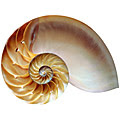In its original sense, science (from the Latin scire, to know) simply meant the state or fact of knowing, as compared to intuition or belief. The current technical sense of the word, however, refers to knowledge obtained from systematic observation, study, and experimentation.
Now, the thing is that many psychological tests aren’t magic; most of them have been developed through sound scientific principles. In fact, anyone who wants to become a psychologist must learn all the scientific principles of test construction; even if a psychologist has no desire to create a new test, he or she must be competent to evaluate the scientific value of any specific test before using it clinically.
Unfortunately, there are many psychological tests in wide use that are accepted as being scientific just because they are called “tests.” For example, the Myers-Briggs Type Indicator and the Enneagram, often used in educational and corporate personnel settings to assess personality “types,” are based in pseudoscience and psychobabble and have about as much worth in clinical settings as astrology. Any competent psychologist can use intuition to get as much information as these “tests” provide.
And then there is the classic Rorschach test that uses inkblots to assess a person’s inner psychological experience. Several methods for administering and scoring the Rorschach have been developed, and although some of them are surrounded with a considerable amount of published research, it would be surprising if any two independent psychologists could administer the Rorschach to the same person and achieve identical findings.
Similarly, tests such as the Thematic Apperception Test (TAT), which asks a person to tell stories about various pictures of social interactions, and the Draw-A-Person and House-Tree-Person, which ask a person to draw pictures, are not usually objectively scored and give results of questionable validity.
In the end, then, psychological testing can, in some ways, be both valid and reliable; yet, in other ways, it often does not achieve much more than an impressionistic evaluation of a person. And often the science and the pseudoscience are quietly mixed together in one “scientific” report, but will never admit that anything that is considered pseudoscience had anything to do with the outcome.
In other words, means beyond the clear-cut scientific ways are being used-as they are an integrated part of any human being, since we instinctively know that we sometimes 'sense' things that can't be explained in any other way, but these means will not be given any credit! How fair is that?
Now, let's think that it is psychologists, clinical psychologists to be exact, that are the ones that not only study autism, but have created tests to diagnose autism, Asperger's syndrome and other conditions on the autistic spectrum. If we take into account that these scientics are neurotypicals studying a non-neurotypical condition, it is obvious that they will study it, and measure it and create tests to diagnose it according to the neurotypical brain's parameters and scientific principles.
It almost feels like having an inuit design clothes for the inhabitants of Africa while never having been to Africa. Do you think the clothes will be appropriate for the African climate? Do you think that the tests to diagnose autism are appropriate to the way the autistic brain works?
Abonneren op:
Reacties posten (Atom)



Geen opmerkingen:
Een reactie posten